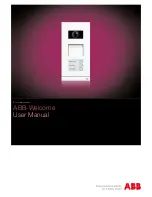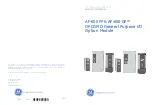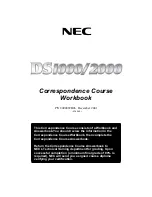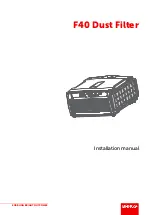
Glossary
17
Salt:
To ensure maximum benefits with the use of the system,
the ideal salt level is 4000 ppm (parts per million). A low
concentration of salt can hinder the generator’s effectiveness.
A concentration of salt above 5500 ppm may cause corrosion
damage to the pool fixtures. See Adding Salt on page 6.
Total Dissolved Solids (TDS)
are different from the salt level
of the pool, although TDS levels rise with the addition of salt.
This does not harm the pool water chemistry or clarity. To
determine an accurate TDS, subtract the salt level from the
TDS reading.
Free Chlorine v. Combined Chlorine:
The unpleasant smells
and side effects often associated with chlorine are actually
caused by combined chlorine (i.e. chloramines). Combined
chlorine is a chlorine molecule that has combined with a
contaminant and needs to be burned off with a shock treatment
to free up the chlorine again. With the POOL FROG
®
Mineral
Hybrid depending on pump-run time per day, the combined
chlorine is burned off at the point of the cell which reduces
the need to shock.The free chlorine level in the pool should
be maintained at 0.5 to 1.0 ppm.
pH
is a measure of how acidic or basic a solution is. A scale
of 0 to 14 is used to measure pH. Pure water has a pH of 7
(neutral), acid solutions have a pH of less than 7, and basic
(alkali) solutions have a pH of more than 7. The recommended
range is 7.2 to 7.8; chlorine is more effective within this range
and the water is most comfortable for bathers. Water with very
high pH levels can cause scaling in the pool, on the walls and
in pipes. Low pH levels cause the water to be aggressive to
the pool walls, equipment and bathers.
To lower pH, add muriatic acid or dry acid, and to raise pH,
add soda ash (sodium carbonate). Be sure to read and follow
the respective manufacturer’s instructions.
Total Alkalinity
mitigates changes in pH. It is often referred
to as the “big brother of pH.” Keeping proper levels of total
alkalinity will help reduce unwanted fluctuations in pH levels.
Total alkalinity is also used to offset high or low levels of
calcium hardness (see Saturation Index on previous page).
Add muriatic acid or dry acid to lower total alkalinity and add
baking soda (sodium bicarbonate) to raise total alkalinity. Be
sure to read and follow the respective manufacturer’s
instructions.
Stabilizer (cyanuric acid)
is necessary in most outdoor pools
to prevent chlorine reduction from the sun’s ultraviolet rays.
Chlorine stabilizer should be maintained at 40 ppm to offset
the harmful effect of the sun while maintaining the effectiveness
of the chlorine.
Nitrates and Phosphates
, generally associated with fertilizer
thrown or sprayed on nearby grass, can put very high demands
on chlorine; most often nitrates and phosphates will bring the
chlorine level down to zero (0). You can have your water tested
for nitrates and phosphates by the local pool professional.
No
nitrates or phosphates should be in your pool
. To reduce
phosphate levels, use a phosphate remover from your local
pool professional. To reduce nitrate levels, the pool must be
partially or fully drained, but be sure to consult your local
professional before draining your pool.
Metals
(certain metals) can cause loss of chlorine and can
stain your pool. If a water test reveals the presence of metals,
refer to your local pool professional for recommended methods
of removal prior to using the POOL FROG
®
Mineral Reservoir.
New Pool Water
in recently filled or newly refinished pools
may contain undesirable matter. The ability of the POOL
FROG
®
Mineral Hybrid Generator to maintain your pool
sanitation could be hindered by this matter so it is best to
balance the pool water first.
Calcium Hardness
, like pH and alkalinity, affects the water’s
tendency to be aggressive or scale forming. Lower levels of
calcium hardness improve the chlorine generator’s performance
and provide softer silkier water for the swimmers.
Saturation Index
determines whether the pool water is
balanced, aggressive or scale forming by comprehensively
taking into account all the relevant factors, including pH level,
alkalinity level, calcium hardness and temperature. These
factors should be tested then plugged into the worksheet on
the previous page to verify the proper balance of the pool and
make adjustments as necessary.
Summary of Contents for Mineral Hybrid
Page 8: ......




































